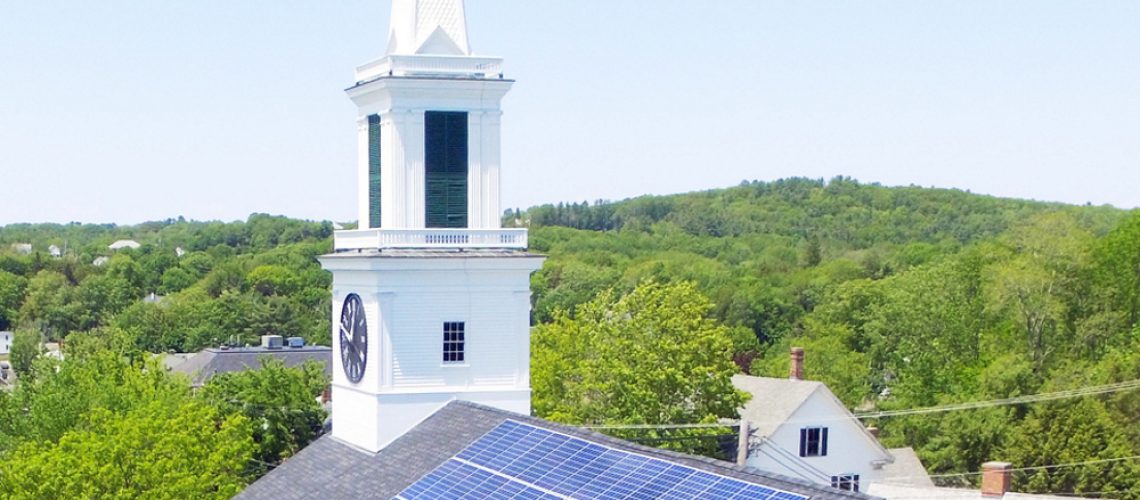A coalition of distributed solar installers have petitioned to throw out an interconnection cost allocation rule in Virginia that has led to project delays and cost increases.
A group of solar installers called the Distributed Solar Alliance have filed a petition with the Virginia State Corporation Commission against Dominion Energy for what the group deems unfair parameters for the grid interconnection of projects ranging from 250 kW to 1 MW in size.
The group said that new interconnection parameters imposed by investor-owned utility Dominion Energy have imposed “substantial and irreparable harm” to midsized nonresidential solar projects in the state of Virginia. The petition requests the courts suspend the parameters in an expedited fashion so that cost-sharing rules in-line with state law can be developed.
The parameters set by Dominion pose “unreasonable and unprecedented costs, delays, and barriers that are not necessary for behind-the-meter projects interconnecting with Dominion’s distribution system.”
Dominion’s interconnection policy requires that distributed solar developers conduct substation improvements like transformer upgrades. It also requires the developer to foot the bill for dedicated dark fiber transmission lines and a dedicated relay panel.
Dark fiber is excess optical fiber that was installed during the telecom boom and has gone unused. The group highlights that dark fiber upgrades cost $150,000 to $250,000 per mile to upgrade, and a relay panel can cost $250,000 plus as much as an additional $1.2 million for engineering, mobilization and construction management. The solar group argues that the costs, plus associated delays, have made many (if not most) projects of this mid-size infeasible in the state.
The group’s petition highlights the fact that Dominion is required under the Interconnection Law “to provide distribution within its service territory on a basis that is just, reasonable, and not unduly discriminatory to suppliers of electric energy, including distributed generation, as the Commission may determine.”
Projects in the 250 kW to 1 MW range are often serving public schools, municipalities and other public and private entities, and often come with many environmental and energy efficiency benefits over the largest-scale centralized utility solar projects.
“One solar developer member of [the Virginia Distributed Solar Alliance] was dismayed to learn, just before work was scheduled to start on a 710 kW solar array in April of 2023, that the project would have to bear $276,000 of upgrades on the Dominion side of the meter as well as up to $320,000 of estimated costs for 1.6 miles of dark fiber,” said the petition.
A similar problem befell the solar project planned for the James River Juvenile Detention Center, where a 686 kW solar array was stuck with $2.25 million in preliminary costs, the majority of which are for running nine miles of fiber optic cable and other to-be-determined costs. Henrico County is paying for the project, which is now sidelined due to the utility’s heavy cost assessment.
“The project cannot absorb these costs, so it is on hold indefinitely,” said Carrie Webster, energy manager for Henrico County.
Another facet the distributed solar developer alliance is trying to change is the utility requirement known as the Small Generator Interconnection Agreement (SGIA), which shifts project risk onto the customer, rather than the project developer. The SGA essentially overrides the traditional contract structure of a power purchase agreement (PPA) where the developer is the one shouldering the project’s risk.
“The unacceptable requirement to sign an SGIA that would contradict our solar PPA contract, would impede an already tight budget with our school division,” said Jennifer Rokasky, a Virginia school division energy manager. “It is punitive and dissuades public entities from pursuing a Solar PPA, which can help save money on utility costs and work towards reducing greenhouse gas emissions to leave a more sustainable future for our students. Are these costs fair? Appropriate?”
Dominion Energy said it is willing to explore other options for the SGIA. As for the interconnection requirements, Dominion has not budged, arguing that the dark fiber and other upgrades are needed as safety measures during grid outages and emergency events.
The full petition filing to the Virginia Corporation Commission can be found here.
Virginia is not alone in its interconnection woes. The Interstate Renewable Energy Council (IREC) and Vote Solar have graded each state on its policy governing interconnection of distributed solar and storage, and only one state, New Mexico, earned an A. Many states received failing grades. The two organizations published a guide to interconnection improvements state-by-state.



